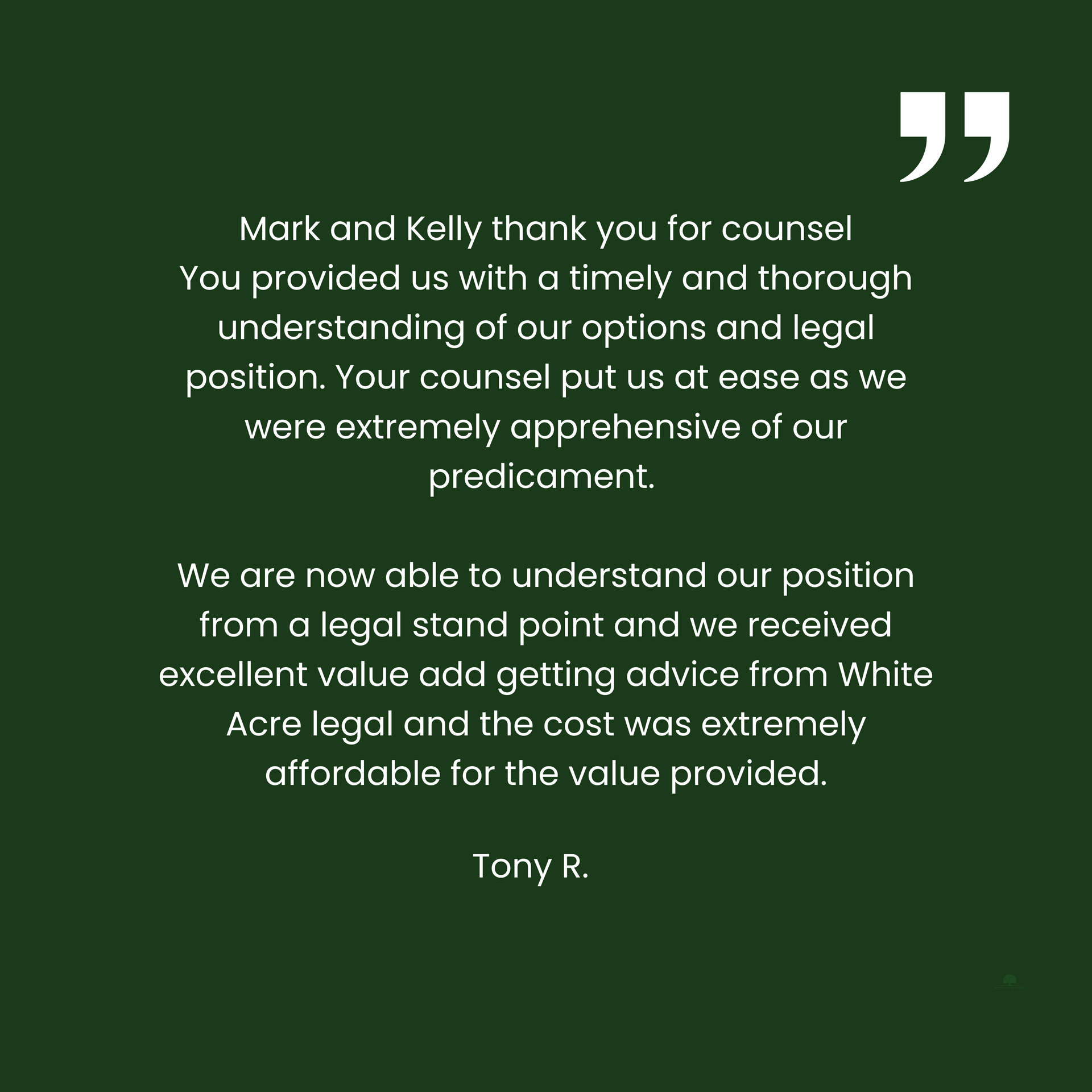Consent for Unauthorised Works
It is now well established that a development consent cannot be obtained to authorise works that have already been carried out. The classic example is a building that has been built without development consent.
A development application seeks approval to “carry out” development. If the building has already been built, the development has already been “carried out”.
Despite this now being well established, we are often approached by clients who are told to lodge a development application to “regularise” an illegal building.
This article dives into the issue of retrospective operation of development consents, specifically through analysis of Chief Justice Preston’s consideration of the issue in Ku-ring-gai Council v Buyozo Pty Ltd [2021] NSWCA 177 (Buyozo). Buyozo is also a useful case when considering the operation of conditions of development consents and when they are “spent” and have no further work to do.
Introduction
Ku-ring-gai Council v Buyozo Pty Ltd addresses the limits of judicial power to modify development consents retrospectively. The issue that arose in this case was whether a developer, having already complied with a monetary contribution condition, could later seek a reduction in the amount of that contribution by modifying the original development consent.
Facts
This case involved a dispute between Ku-ring-gai Council and Buyozo Pty Ltd regarding a development consent condition related to payment of a monetary contribution under section 7.11 of the Environmental Planning and Assessment Act 1979 (NSW) (EPA Act). Buyozo were approved to construct a building in Pymble. Condition 30 of the development consent required the payment of a monetary contribution of $987,242.37 to Ku-ring-gai Council before a construction certificate was issued. Buyozo paid the full contribution and received the construction certificate.
After the building was completed, Buyozo applied to modify the development consent to reduce the monetary contribution by $327,162.84, arguing that an error had been made in the gross floor area calculation used to determine the contribution payable.
Buyozo appealed the deemed refusal of the modification application to the NSW Land and Environment Court. The Court (at first instance) allowed the modification, reducing the contribution amount.
Ku-ring-gai Council appealed to the NSW Court of Appeal, contending that:
- The Land and Environment Court lacked the power to modify a fulfilled condition.
- Modifications of development consents are prospective and cannot retrospectively impact actions that have already been completed, such as payment of a monetary contribution.
Decision
Basten and Payne JJA and Preston CJ of the NSW Court of Appeal upheld the Council's appeal, finding at [112] that a Court had no power to modify the development consent as sought in Buyozo’s application. The development consent payment condition, which had already been complied with, could not be retrospectively modified.
Consideration
Several key findings were made, relevant to development consents and retrospectivity.
Prospective Nature of Development Consent and Modifications
Development consents and modifications of development consents are inherently prospective. They apply to actions that will take place in the future.
Preston CJ noted at [37] that the current definition of “development” in the EPA Act refers exclusively to acts to be done in the future, and at [39] that:
“The essential characteristic of the grant of development consent means that a development consent cannot be granted to authorise development that has already been carried out, such as the erection of a building that has already been erected, the carrying out of a work that has already been carried out, or the demolition of a building that has already been demolished. A development consent can never retrospectively approve the carrying out of development, but can only prospectively approve the carrying out of development.”
Once a condition, such as payment of a monetary contribution, has been fulfilled, it cannot be retrospectively altered by modifying the consent. The modification powers under sections 4.55 and 4.56 of the EPA Act cannot be used to undo actions that are already completed.
No Power to Retrospectively Reduce the Contribution
Preston CJ found, at [36], that there was no power to modify the development consent to amend the payment condition, where the amount had already been paid. At [46] he outlined that:
“Once Buyozo paid the contribution in accordance with the condition, the condition had no further work to do – it no longer regulated the carrying out of the development. It thereupon became a condition that was not capable of being modified”.
Since Buyozo had already paid the monetary contribution in full, the modification of the development consent could not retrospectively alter the amount. The payment was a finalised action, and modifying the consent after the fact would be outside the Court’s powers.
Utility of the Modification
The Court concluded that modifying the development consent after the contribution had been paid would serve no practical purpose and would not alter the legal position of the parties.
Basten and Payne JJA stressed at [10] that:
“There was no proposal to modify or change in any way the development to which consent had been granted. The same building (which had already been completed) was to be used for the same purpose (which was its current use).”
Preston CJ stated at [52] that:
“The first reason [it was not possible to modify the development consent] is the general proposition… that a condition cannot be modified to require retrospectively the payment of a lesser amount of contributions than has already been paid. The second reason is a particular proposition relating to the need for a modification under s 4.56(1) of the EPA Act to effect some change to the development the subject of the development consent”
Preston CJ referenced Houlton v Woollahra Municipal Council (1997) 95 LGERA 201, at [53], describing the power to modify a development consent “as both beneficial and facultative”. Its introduction to the EPA Act supplemented, and did not remove, the right to obtain successive development consents in respect of the same land. A court can, therefore, only modify a development consent if the modification will effect some change to that development.
Preston CJ highlighted, at [64], that the development consent modification sought by Buyozo was nothing more than substituting a lesser amount in condition 30 and that:
“This modification could not effect any change to the development the subject of the development consent… If development is not changed, no question can arise of whether the development as modified is substantially the same development as originally granted; there is no utility in publicly notifying the proposed modification and considering any public submissions on the proposed modification as there is no change to the development in respect of which the public could make submissions; and there is no utility in notifying persons who made submissions on the development the subject of the original development application to invite them to make submissions on the proposed modification, for the same reason.”
The impermissible, retrospective nature of reducing a past payment and the legislative requirement of some practical change to the development to permit modification of development consent were hurdles that Buyozo failed to overcome. The Court of Appeal found that neither the Council nor the Court were able to act to modify Buyozo’s development consent and reduce the payment amount.
Key Takeaways
- Development consents and modifications operate prospectively, meaning they cannot retrospectively authorise actions already completed.
- The Court cannot retrospectively modify development consent conditions for actions already fulfilled, such as adjusting a monetary contribution after it has been paid.
- The power to modify a development consent is limited to affecting a change in the development itself or correcting errors, not merely altering conditions.
Conclusion
Following the publication of this decision, the Department issued a circular to Councils stressing the above key takeaways. Notwithstanding, this area of planning law remains misunderstood and in many cases landowners continue to be advised to simply lodge a DA to “regularise” an unauthorised building or structure.
In most situations, the appropriate avenue may be to seek a combination of a both a development consent together with a building information certificate with respect to the unauthorised building. Landowners in this situation would be well advised to seek advice from a competent planning lawyer and town planner to navigate their way out of what can be a tricky (and expensive) exercise.
Disclaimer
The contents of this article are a general guide and intended for educational purposes only. Determination of the types of issues discussed in this article is complex and often varies from case to case and involves an understanding of matters of fact and degree. Opinions on those matters can vary and be matters on which reasonable minds may differ.
DO NOT RELY ON THIS ARTICLE AS A SUBSTITUTE FOR COMPETENT LEGAL ADVICE.
Require further Assistance? Please do not hesitate to call us on (02) 9145 0900 or make an enquiry below.
Browse by categories

Servicing all of NSW, Whiteacre provides expert property law and planning and environment law advice and assistance.
✓ Planning Law Advice
✓ Land and Environment Court Appeals
✓ Voluntary Planning Agreements and Contributions
✓ Development Control Orders and Enforcement
✓ Property Development Advice and Due Diligence
✓ Title Structuring
✓ Easements and Covenants
✓
Strata and Community Title legislation
Book an initial consultation through our website with our planning law solicitor. Whether it's about planning and environment law or property law, you can approach us and discuss your matter to make sure we are a good fit for your requirements.


































